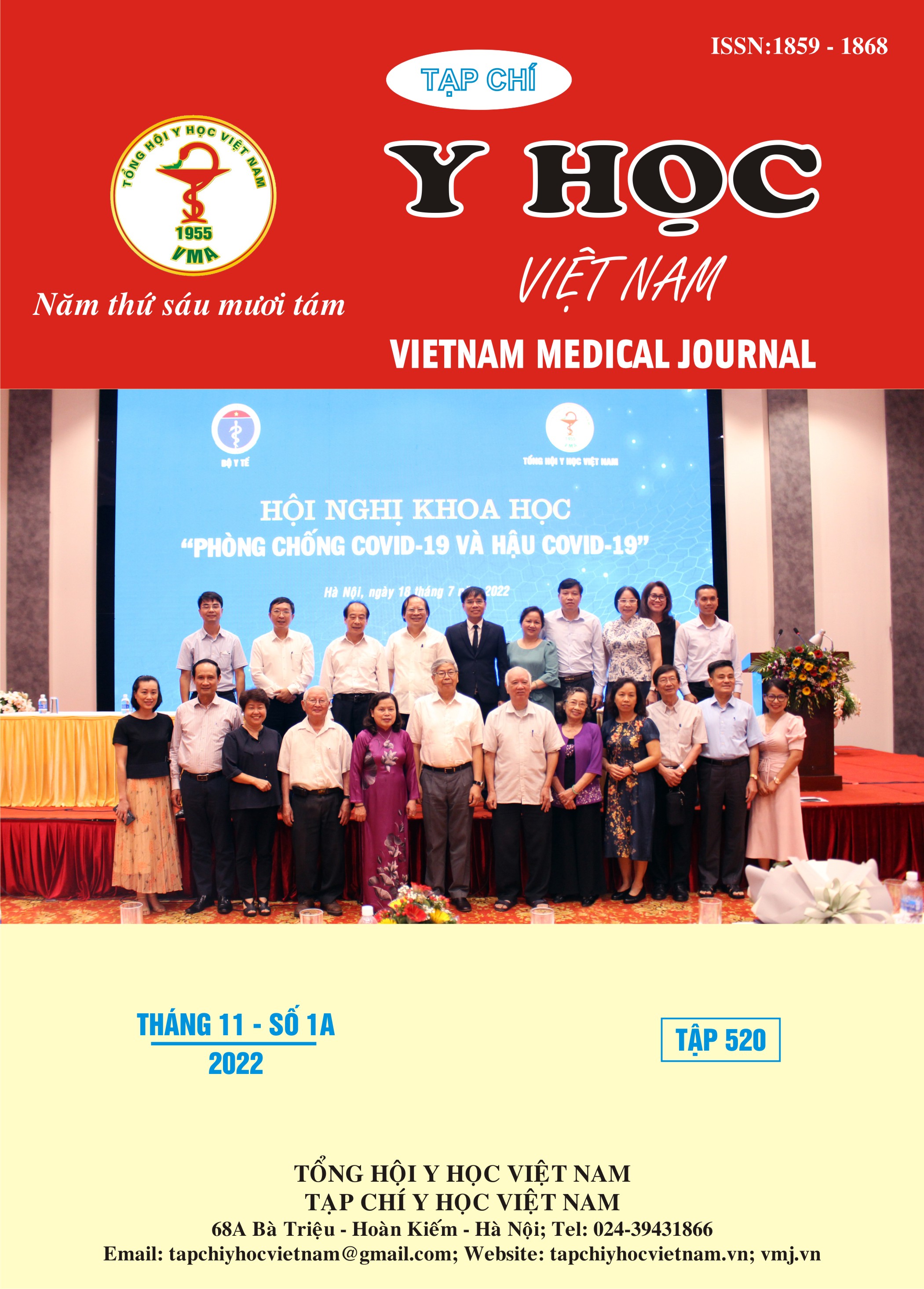RESEARCH ON SOME RISK FACTORS OF RECCURENT ISCHEMIC STROKE DUED TO MIDDLE CEREBRAL ARTERY IN BACH MAI HOSPITAL
Main Article Content
Abstract
Reccurent ischemic stroke dued to damaged middle cerebral artery (MCA) causes neurological impairment, increases the rate of disability, death and treatment costs many times higher than that of the first ischemic stroke. The assessment of risk factors plays an extremely important role in the prevention of recurrent cerebral infarction. Objective: To determine some risk factors for recurrent cerebral infarction dued to damaged middle cerebral artery. Subjects and methods: A cross - sectional descriptive study on 77 patients diagnosed with recurrent ischemic stroke dued to damaged middle cerebral artery at the Neurology Center - Bach Mai Hospital from July 2021 to August 2022. Results: There were 22 female patients and 55 male patients with an average age of 65 ± 11 years old, mainly aged 61 - 70 years old (44,2%). The first reccurent stroke account for the highest rate (64,9%). The time from the most recent cerebral infarction to the recurrence of cerebral infarction from 12 months - 5 years accounts for the highest rate (33,8%). The main damaged arterial branch is M1 branch (40,3%). Hypertension and hyperlipidemia are two mainly risk factors. Patients with reccurent ischemic stroke dued to MCA have an ineffective state of prevention of recurrence. Conclusion: In our study, cerebral infarction due to middle cerebral artery lesions had more risk factors and less effective prevention of recurrence.
Article Details
Keywords
ischemic stroke, recurrence, middle cerebral artery, risk factors, recurrence prevention
References
2. Hata J., Tanizaki Y., Kiyohara Y. và cộng sự. (2005). Ten year recurrence after first ever stroke in a Japanese community: the Hisayama study. J Neurol Neurosurg Psychiatry, 76(3), 368–372.
3. Xu G., Liu X., Wu W. và cộng sự. (2007). Recurrence after ischemic stroke in chinese patients: impact of uncontrolled modifiable risk factors. Cerebrovasc Dis, 23(2–3), 117–120.
4. Nguyễn Thị Thu Huyền và Nguyễn Văn Chương (2012), Nghiên cứu đặc điểm lâm sàng, hình ảnh học thần kinh và một số yếu tố nguy cơ ở bệnh nhân tái đột quỵ nhồi máu não, Luận án tiến sĩ y học, Học viện Quân Y.
5. Đinh Hữu Hùng và Vũ Anh Nhị (2014), Nguy cơ tái phát sau đột quỵ thiếu máu não cục bộ cấp theo phân tầng một số yếu tố liên quan, Luận án tiến sĩ Y học, Đại học Y dược thành phố Hồ Chí Minh.
6. Kleindorfer D.O., Towfighi A., Chaturvedi S. và cộng sự. (2021). 2021 Guideline for the Prevention of Stroke in Patients With Stroke and Transient Ischemic Attack: A Guideline From the American Heart Association/American Stroke Association. Stroke, 52(7), e364–e467.


